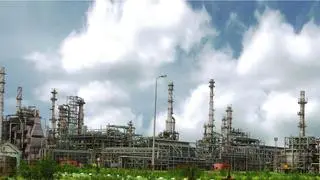While automation is one of the key tools for a manufacturing company to remain competitive, blindly following other players can in fact stunt its growth.
Bhaskar Mandal, Head, Industry Sector, Siemens Ltd, in an interview with Business Line, points out how important it is for companies to have the right automation.
For example, Siemens helped NASA launch Rover to Mars by using the right automation tools.
Edited excerpts:
What has been Siemens’ approach to Indian industry’s automation drive?
Previously, automation was used in industries to ensure quality, consistency and increased production efficiencies.
Today, it’s not about just making things, but it’s about making them right – at the right time, with the right price, using the right resources and at the right place. Siemens has ensured that customers are not blindly aping the west when it comes to adopting automation.
Instead, it has ensured that they have the right automation.
How is Siemens preparing to serve India’s automation initiatives?
Siemens has offered a comprehensive suite of products, solutions and services from the ‘board to the road’.
On one hand, our industry software solutions make it possible to plan out the operations process, output, future scalability and the optimal plant layout without even having to lay a single brick.
For example, NASA used our PLM software solutions to launch the ‘Rover’ in Mars, without ever building a prototype.
With our solutions, customers can reduce time-to-market by 50 per cent. This can tremendously benefit the profitability and competitiveness of an organisation.
What are the challenges faced by Siemens in India?
Siemens is facing challenges like lack of awareness. It’s the biggest challenge for us for many industries, especially the SME sector which has a perception that automation leads to increased cost.
They need to look beyond the tangible benefits, which are nothing but the immediate return on investment.
While exhibitions like Elecrama (the power transmission and distribution expo at Bangalore) do help us reach out to our target audience, a vast part still remains untouched.
What are the innovations Siemens is working on for local and global adoption?
Siemens has developed a concept of ‘Integrated Drive Systems’ (IDS).. Drive train is a term used to refer to a combination of electric drive, motor, gearbox and coupling, which transfers electrical energy to a rotating part of machinery.
A completely assembled drive train package, designed and integrated to work together, is referred to as an IDS.
IDS ensure increased efficiency, reliability and productivity and it boosts the plant availability up to 99 per cent.
Are there enough skill sets available in India for automation initiatives?
There are skilled workforces available but not skilled enough to make them readily employable by industries.
Developing skills is a huge area of focus for Siemens. What opportunities does Siemens see for itself in India in 2014?
The Centre’s National Manufacturing Policy aims to increase contribution of the manufacturing sector to GDP from 16 to 25 per cent by 2025.
To achieve this, companies, including 26 million Indian manufacturing MSME units, need to adopt technologies that would make them competitive on a global scale.
Today, the Indian MSME sector contributes only 8 per cent to the GDP.
There are several needs which are still unfulfilled in India – basic infrastructure, food, clean water and so on. We see a huge potential here to increase our productivity and competitiveness.
anil.u@thehindu.co.in







Comments
Comments have to be in English, and in full sentences. They cannot be abusive or personal. Please abide by our community guidelines for posting your comments.
We have migrated to a new commenting platform. If you are already a registered user of TheHindu Businessline and logged in, you may continue to engage with our articles. If you do not have an account please register and login to post comments. Users can access their older comments by logging into their accounts on Vuukle.